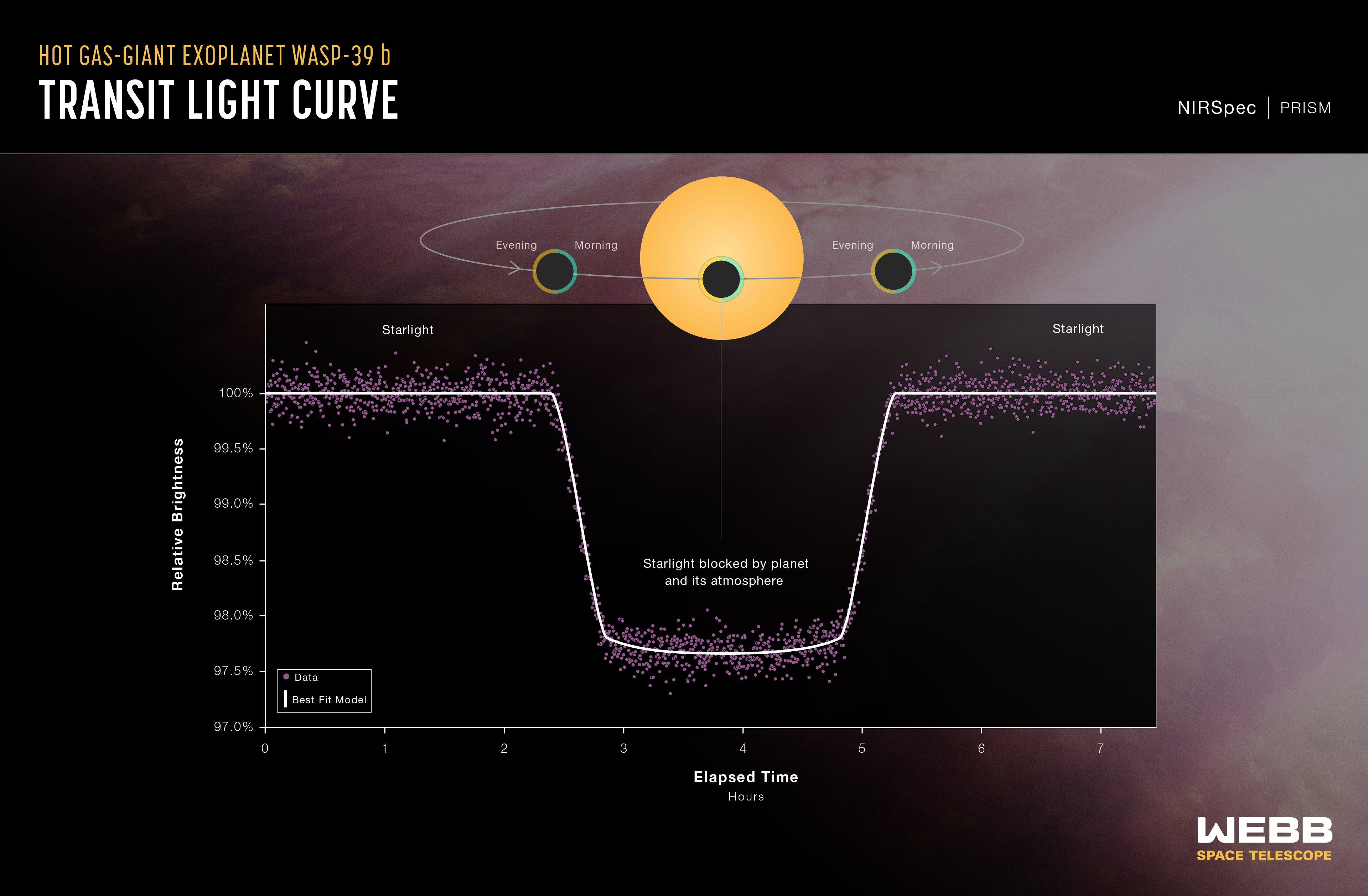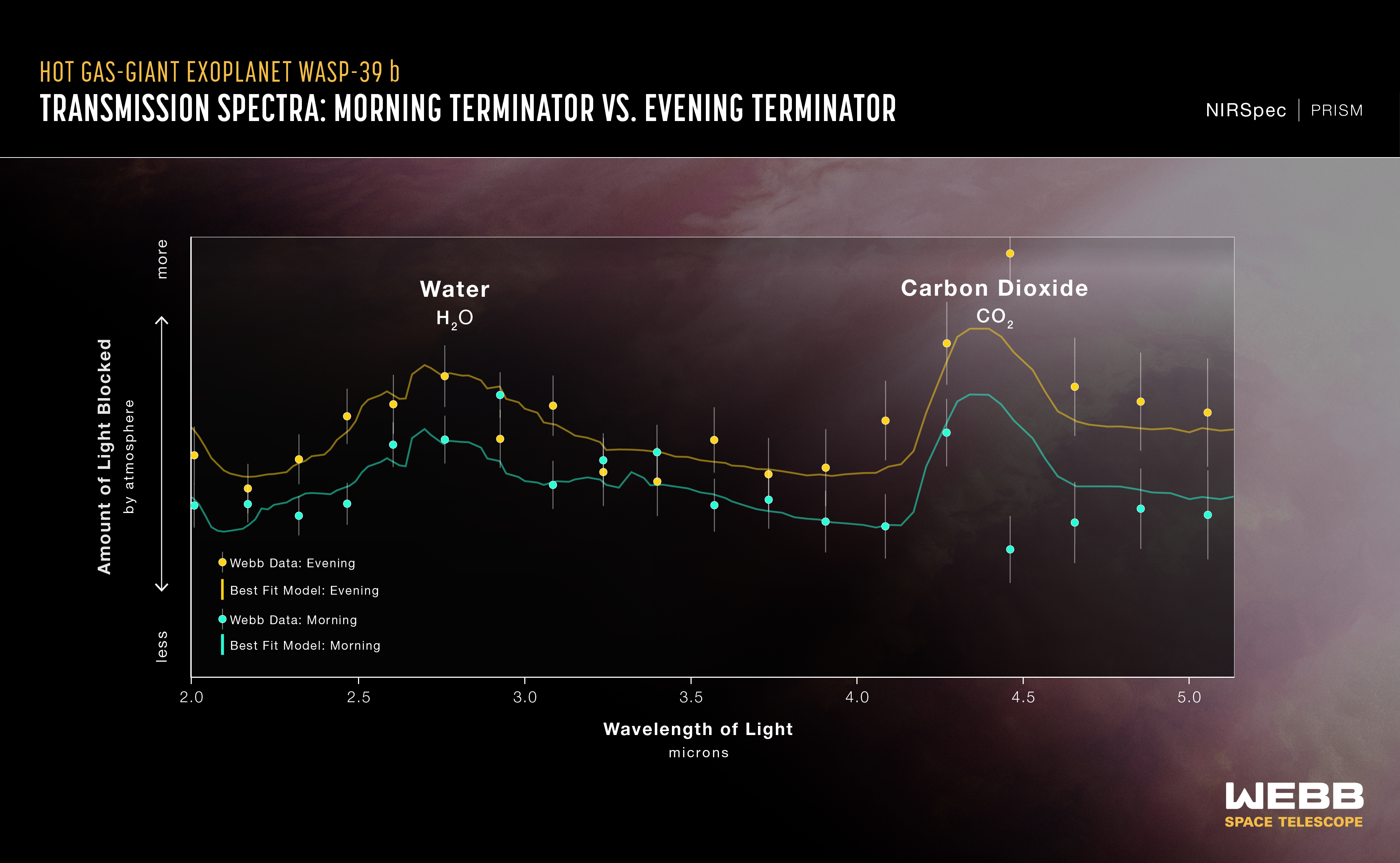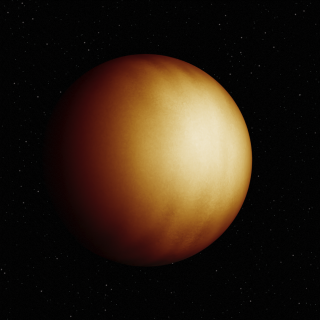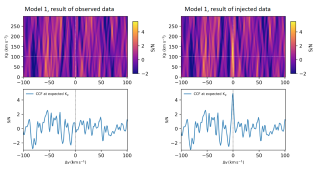Using observations made with the James Webb Space Telescope (JWST), an international scientific team, in which the Instituto de Astrofísica de Canarias (IAC) participates, has confirmed variations in morning and evening atmosphere of the exoplanet WASP-39 b, about 700 light-years away from Earth. The research has revealed differences in temperature and atmospheric pressure, as well as indications of different cloudiness and winds that could reach thousands of miles per hour. The results are published in Nature.
WASP-39 b, a giant planet with a diameter 1.3 times greater than Jupiter, but similar mass to Saturn orbits a star about 700 light-years away from Earth, is tidally locked to its parent star, like the Moon to the Earth. This means it has a constant dayside and a constant nightside—one side of the planet is always exposed to its star, while the other is always shrouded in darkness.
Using JWST’s NIRSpec (Near-Infrared Spectrograph), astronomers analyzed the transmission spectrum of WASP-39 b, a technique that studies the exoplanet’s terminator, the boundary that separates the planet’s dayside and nightside. A transmission spectrum is made by comparing starlight filtered through a planet’s atmosphere as it moves in front of the star, to the unfiltered starlight detected when the planet is beside the star. When making that comparison, researchers can get information about the temperature, composition, and other properties of the planet’s atmosphere.
“WASP-39 b has become a sort of benchmark planet in studying the atmosphere of exoplanets with Webb,” said Néstor Espinoza, an exoplanet researcher at the Space Telescope Science Institute (STScI) and lead author on the study. “It has an inflated, puffy atmosphere, so the signal coming from starlight filtered through the planet’s atmosphere is quite strong.”
The team obtained two different spectra from the terminator region, one from the "morning" terminator and the other from the "evening" terminator. Data reveals the evening as significantly hotter, a searing 1,450 degrees Fahrenheit (800 degrees Celsius), and the morning a relatively cooler 1,150 degrees Fahrenheit (600 degrees Celsius).

“It’s really stunning that we are able to parse this small difference out, and it’s only possible due Webb’s sensitivity across near-infrared wavelengths and its extremely stable photometric sensors,” said Espinoza. “Any tiny movement in the instrument or with the observatory while collecting data would have severely limited our ability to make this detection. It must be extraordinarily precise, and Webb is just that.”
Extensive modeling of the data obtained also allows researchers to investigate the structure of WASP-39 b’s atmosphere, the cloud cover, and provides hints to why the evening is hotter. Using General Circulation Models, 3-dimensional models similar to the ones used to predict weather patterns on Earth, researchers found that on WASP-39 b the morning side gets slammed with winds of air that have been cooled on the nightside, while the evening is hit by winds of air heated on the dayside. As a result, the morning side of the terminator is cooler than the evening side.
Since the temperature difference is so extreme, the air pressure difference would also be significant, which in turn would cause high wind speeds. Research suggests the wind speeds on WASP-39 b can reach thousands of miles an hour. They also found evidence of different cloud cover, with the morning being likely cloudier than the afternoon. Future work by the team will study how the cloud cover may affect temperature and vice versa.
“This analysis is also particularly interesting because you’re getting 3D information on the planet that you weren’t getting before,” added Enric Pallé, a reseracher at the IAC and co-author of the study. "As the evening terminator is hotter, that means that this region of WASP-39's atmosphere is a little puffier. So, theoretically, contrary to what happens on planets in the solar system, there is a small swell in WASP-39's atmosphere centred on the day side and evening terminator."


WASP-39 b was among the first targets analyzed by Webb as it began regular science operations in 2022. The data in this study was collected under Early Release Science program 1366, designed to help scientists quickly learn how to use the telescope’s instruments and realize its full science potential.
Further to this excellent result, the researchers will now look to use the same method of analysis to study atmospheric differences of other tidally locked hot Jupiters, as part of Webb Cycle 2 General Observers Program 3969.
Article: Nestor Espinoza et al. “Inhomogeneous terminators on WASP-39b”. Nature, 2024. DOI: https://doi.org/10.1038/s41586-024-07768-4
Space Telescope Science Institute press release
Contact at the IAC:
Enric Pallé, epalle [at] iac.es (epalle[at]iac[dot]es)







